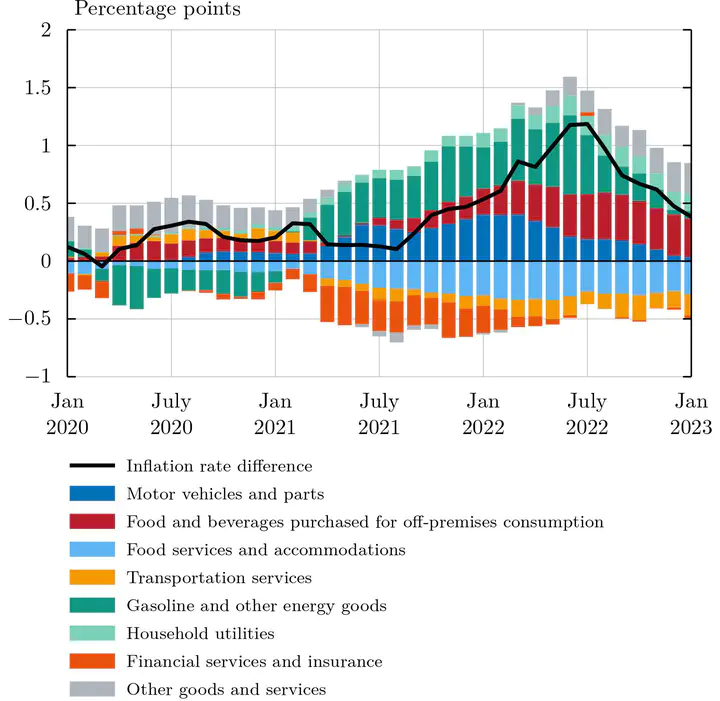A Distributional PCE Price Index From Aggregate Data
 PCE inflation rate difference between top and bottom deciles
PCE inflation rate difference between top and bottom decilesAbstract
This paper proposes a method to measure individual and aggregate changes in the cost of living when consumer behavior is nonhomothetic and microdata on consumption expenditures are not available. Aggregate prices and expenditure shares together with a single cross-sectional distribution of expenditures are sufficient to create a distribution of nonhomothetic cost-ofliving indices with this approach. The cost-of-living indices derive from PIGL preferences, generalize the Törnqvist price index, and only contain two unknown parameters. Because PIGL preferences aggregate consistently, these parameters can be identified from aggregate data. Using US Personal Consumption Expenditure (PCE) data, the method is applied to obtain a nonhomothetic PCE price index covering 72 product groups. This index reveals a 0.5–1.2 percentage point gap in annual inflation rates between the poorest and richest ten percents throughout 2022, and a similar 0.2 percentage point gap on average since 1988, thus suggesting that poorer households are hit harder both in the ongoing inflation surge and in the long run.